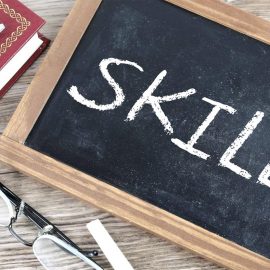

This article is an excerpt from the Shortform book guide to "Grit" by Angela Duckworth. Shortform has the world's best summaries and analyses of books you should be reading.
Like this article? Sign up for a free trial here .
What is the grit method? Are there any reasons this method might not work?
The grit method argues that passion and perseverance are better markers of success than talent or intelligence. The method is widely accepted, but there are some counterarguments, like having too much grit.
Keep reading to find out more about the grit method.
The Grit Method
Grit is the combination of passion and perseverance.
- Passion is the consistency of goals held over long periods of time. It is NOT intensity or enthusiasm held for a brief moment. It is endurance.
- Perseverance is the ability to overcome setbacks, put in hard work, and finish things you’ve started.
Grit predicts success, even when controlling for talent or IQ. That is, between two people of the same talent level, a grittier person will enjoy more success.
Make no mistake: talent and IQ are still important and still correlate with success. However, they are not sufficient for high achievement. If you are talented, you get the most mileage by combining talent and hard work. And if you are less talented, you can make up for it with grit, exceeding someone with more talent who works less hard.
We tend to fetishize talent because it protects our ego – if other people’s successes are due to inborn talent, then we are at an inherent disadvantage, and thus we don’t have to feel bad about not measuring up. We look at Albert Einstein or Tom Brady and think, well they were born with it – there’s no way I could do what they do – thus I don’t need to work hard.
Effort counts twice: skill = talent x effort. Achievement = skill x effort. The more effort you apply, the more your skill rises, and the more you achieve.
According to the grit method, grit is changeable. It increases with age, and small experiments show that it can be influenced.
There are 4 components to the grit method:
- Interest: enjoy what you’re doing
- Practice: conduct deliberate practice to improve on your weaknesses and continuously improve
- Purpose: believe that your work matters and improves the lives of others
- Hope: believe in your capacity for achievement and ability to overcome difficulties.
The most successful parenting style is both supportive and demanding. The two do not need to trade off with each other. Listen to your kids, talk to them, respect their viewpoints. Also, set ambitious goals for them, punish them for breaking rules. This is also true of leadership and coaching in professional environments.
To become more gritty, join a gritty culture. The social norms will force you to be gritty.
Does Grit Work?
Duckworth ends the book with a series of rebuttals to common counterarguments about grit.
Does grit conflict with happiness?
- No – actually, life satisfaction and grit correlate strongly. Duckworth hasn’t yet studied the happiness of people around gritty people – partners, children, parents. However, she believes her kids appreciate her grittiness and know achieving their goals is better than complacency.
Can you have too much grit, just like you can have too courageous or too honest?
- Duckworth admits that persevering blindly and without exception isn’t the best default – this can cause you to miss opportunities. Ideally, you swap the activity with something else that is consistent with your ultimate concern.
- She also argues that by far, most of us need more grit, not less.
Is grit the only thing that matters? No. In reflecting on this, morality is the most important character trait. Duckworth defines three clusters of character:
- intrapersonal (grit, self-control) – the resume virtues
- interpersonal (gratitude, social intelligence) – the eulogy virtues
- intellectual (curiosity, zest)
Each of these clusters predicts different outcomes.
Does encouraging grit set expectations unrealistically high for children? Will they grow up thinking they can be Mozart or Einstein? If they realize they can’t get there, will they give up?
- The point of growth is not to become Einstein – it’s to be the best you can, and to break past your self-imposed limits. To use the grit method is to put one foot in front of the other, day after week after year, to fall down and rise again.
Now that you understand the grit method, you can start applying it to your life.

———End of Preview———
Like what you just read? Read the rest of the world's best book summary and analysis of Angela Duckworth's "Grit" at Shortform .
Here's what you'll find in our full Grit summary :
- How your grit can predict your success
- The 4 components that make up grit
- Why focusing on talent means you overlook true potential






